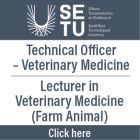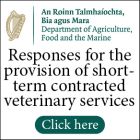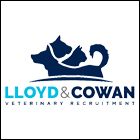Large animal - March 2019
The prevalence of Mycoplasma bovis on Irish cattle farms
Aurelie Moralis DVM Cert DHH MRCVS, national veterinary manager, Zoetis Ireland, assesses the prevalence of Mycoplasma bovis on Irish farms when controlling respiratory disease in youngstock
Bovine respiratory disease (BRD) is a major problem of young stock, causing significant loss and compromising animal welfare. Exposure to Mycoplasma bovis increases the risk of calves being treated for respiratory disease.1 Mycoplasma bovis is not uncommonly isolated from the lungs of pneumonic calves2 so it’s important when controlling respiratory disease in youngstock, that we understand its role.
Epidemiology
Mycoplasma bovis is well adapted to causing chronic, asymptomatic infections and, therefore, the role of ‘carrier’ animals is an important part of the Mycoplasma bovis story. Animals may remain infected for many years, shedding bacteria intermittently. The main sources of infection are respiratory secretions and infected milk. In infected herds, calves become infected when they are very young, either in the calving pen, from ingesting infected colostrum or milk, or from close contact with individuals shedding Mycoplasma bovis in respiratory secretions. Calves then go on to shed Mycoplasma bovis in large numbers particularly during the first two months of life, playing an important role in onward spread of infection.
In many infected herds, the role of contaminated milk is crucial. Small numbers of infected cows can potentially contaminate large volumes of milk. Calves fed contaminated milk are much more likely to be colonised by Mycoplasma bovis.
Large numbers of Mycoplasma bovis can be isolated from the air of sheds housing infected animals. Poor air circulation will significantly increase the bacterial load of the environment, and therefore the rate of transmission of the mycoplasma.
The role of fomite needs to be considered as well. Transmission of bacteria from calf to calf via infected feeding equipment, pen divisions and bedding could all play a role in spreading the bacteria and subsequent clinical disease.
In diseased herds, the prevalence of colonisation of the upper respiratory tract can be very high, with reports of 100% of animals being infected. Given the routes of transmission of the bacteria, it is not surprising that herds which experience high rates of Mycoplasma bovis-associated disease tend to have a higher prevalence of infection, and that once a herd is infected, eradication of Mycoplasma bovis is extremely hard due to the continual cycle of infection, shedding and transmission.
In one study3 the proportion of calves shedding Mycoplasma bovis increased from 49% to 91% of the group in just three weeks (Figure 1). Where calves are sourced from multiple farms, it’s clear to see that getting on top of Mycoplasma bovis can be challenging.
Clinical signs
Clinical signs are typical of calves with respiratory
disease and include: elevated temperature; increased respiratory rate; breathlessness; decreased appetite with or without nasal discharge; and coughing.3 The only potential distinguishing clinical picture of Mycoplasma bovis may be the tendency for chronic cases to respond poorly to many antimicrobial treatments.
Affected calves may also suffer from otitis media/interna, arthritis, or both.⁴ Middle ear infections can occur as single cases or as outbreaks. Calves are seen with head shaking as a result of ear ache, ear droop progressing to a head tilt, nystagmus, circling and recumbency as infection penetrates the inner ear. Some will also have problems swallowing and others may go on to develop meningitis. If signs of these disorders appear in conjunction with BRD, it significantly increases the likelihood of Mycoplasma bovis involvement. Mycoplasma bovis is a recognised cause of mastitis and has, on occasions, been linked with cases of infertility, abortion and keratoconjunctivitis.
Prevalence
Prevalence varies across regions and between production systems, but it is well established that across Europe, Mycoplasma bovis is a highly prevalent bacterium. Exposure increases in systems which rely on mixing of animals from multiple sources, and with high stress husbandry systems. A study5 on Belgian veal units found Mycoplasma bovis in 87.5% of respiratory disease outbreaks. In an Italian study6, 100% of the six-month-old veal calves at slaughter had been exposed to Mycoplasma bovis. In the UK, 2015 data from a subsidised serology scheme run by Zoetis showed 50 per cent of 2,460 calves with a history of respiratory disease, had been exposed to Mycoplasma bovis. This figure had increased from 45% in 2014 and 41% in 2013. In Northern Ireland, 59 out of 77 (76.6%) farms investigated by Zoetis in the course of 2015-2016 showed evidence of exposure to Mycoplasma bovis and, on average, 64% of calves (238 out of 372) had positive titres.
In 2016, Mycoplasma bovis was the most frequently detected respiratory pathogen in calves aged one to five months, occurring in 29% of cases in Northern Ireland, while it was detected in 13.3% in Republic of Ireland. In weanlings aged five to 12 months', Mycoplasma bovis was diagnosed as the cause of mortality associated with respiratory disease in 23% of cases at Agri-Food and Biosciences Institute (AFBI) and 6% of cases at the Department of Agriculture, Food and the Marine (DAFM).7
Diagnosis
BRD with poor response to treatment, accompanied by arthritis and/or otitis media/interna, would strongly support a diagnosis of Mycoplasma bovis. Serological testing by enzyme-linked immunosorbent assay (ELISA) will demonstrate previous exposure of the animal to infection. Diagnosis of pathogens in lung tissue through laboratory testing has generally resulted in an underestimation of the prevalence of Mycoplasma bovis for a number of reasons.
Culture of Mycoplasma bovis is not straightforward and requires specialist expertise and equipment and may take a prolonged period of incubation before a negative result can be established with confidence. The culture and identification of other BRD pathogens is easier, so the presence of Mycoplasma bovis may be missed.
Confirmation of current Mycoplasma bovis involvement can only conclusively be determined through the identification of Mycoplasma bovis antigen in lung lesions, using molecular methods such as PCR, qPCR or immunohistochemistry (IHC) staining of lung sections. These tests range in their sensitivity and cost, and there is not a standardised approach within the laboratory network of the EU. Care must be taken when interpreting a negative result and the whole clinical picture should always be considered.
On gross post mortem the affected lungs are deep red colour, with degrees of consolidation. The distribution of the lesions is mainly focused on, but not restricted to, the cranioventral portions of the lung. In many chronic cases (not uncommon in animals affected by Mycoplasma bovis), caseo-necrotic lesions can vary from a few millimetres to several centimetres in diameter and are distinct from typical lung abscesses as they are not surrounded by a well-defined fibrous capsule. These changes are considered by many to be pathognomonic for Mycoplasma bovis infection. Additional signs include a diffuse fibrinous or chronic fibrosing pleuritis and the observation of linear yellow necrotic lesions with oedema fluid in the interlobular septae. Occasionally, lung sequestration, fibrinosuppurative tracheitis and caseous necrosis of regional lymph nodes have also been observed.
Control
There are currently no commercially available vaccines for protection against Mycoplasma bovis, so control needs to focus on minimising the exposure of naive animals. The main sources of Mycoplasma bovis are contaminated milk and respiratory secretions from infected (but not necessarily clinically affected) animals.
Four areas to consider
1. Minimising the risk of spread from dam to new-born calf
Removing new-born dairy calves from the cow and calving box as soon as possible after birth reduces the risk, of spread of infection.
2. Minimising the risk from contaminated milk
This is achieved relatively simply by feeding artificial milk replacer, but of course it is essential that calves receive adequate colostrum as soon as possible after birth, and Mycoplasma bovis can be passed in the colostrum as well. Risk can be minimised by screening cows and then, if necessary, careful selection of cows eligible to contribute to a colostrum pool (bearing in mind other disease risks such as Johne's disease). Pasteurisation of colostrum on a low-temperature, long-duration setting (60˚C for 60 mins) minimises the risk of transmission of infection without destroying the vital antibodies.
3. Minimising risk from purchased cattle
Ideally, screening, quarantine and, if applicable, a treatment policy could be used to minimise the risk from incoming animals. Less effective, but a more viable option on many units, is the separation of animals on arrival when they are stressed and likely to be shedding more Mycoplasma bovis.4. Minimising the risk of animal-to-animal spread Mycoplasma bovis will spread from animal to animal primarily in respiratory secretions, so sick calves with increased shedding should be separated. Ensuring excellent air circulation will reduce the bacterial load in cattle buildings. Mycoplasma bovis is susceptible to common on-farm disinfectants. So, all-in, all-out policies for cattle sheds, coupled with effective disinfection of the housing between batches, is a practical solution for many.
Treatment
Care must be taken when selecting an appropriate antimicrobial, either for the treatment of undifferentiated BRD (where Mycoplasma bovis may be involved) or for outbreaks and individual cases where the involvement of Mycoplasma bovis has already been determined.8
The fact that Mycoplasma species lack a cell wall has important implications for treatment, as it means the beta-lactam antibiotics – cephalosporins and penicillins – are ineffective. Mycoplasma species are also naturally resistant to sulfonamides.
In vitro sensitivity profiles can be an unreliable indicator of clinical efficacy, particularly for certain classes of antimicrobial. Where possible, practitioners should utilise studies that demonstrate efficacy in the face of either a confirmed natural or experimental challenge with Mycoplasma bovis. The two most important factors in the treatment of mycoplasma pneumonia have been described as early recognition and prolonged therapy with continuous therapeutic levels of effective antibiotics for 10 to 14 days. Without this, 30-70% of the calves would relapse, causing more lung damage, and requiring further treatment.9
Conclusion
Mycoplasma bovis alone or in combination with other respiratory pathogens, can cause significant disease. Control relies on improving overall calf health, minimising the exposure of naive cattle and when required implementing effective treatment regimes.
Appropriate vaccination and control programs should be in place for the respiratory viruses such as BRSv, PI3v, IBR and BVDv, since controlling other pathogens will help decrease the risk of Mycoplasma bovis co-infections. Until alternative options (such as vaccines) for Mycoplasma bovis control are commercially available to protect against infections, antibiotics remain the only available treatment option. Where Mycoplasma bovis infection is suspected or confirmed, prudent and targeted use of antibiotics that are effective against this pathogen is required.
- Martin SW, Bateman KG, Shewen PE, et al. (1990) Can J Vet Res 54: 337-342.
- Thomas A, Ball H, Dizier I, et al. (2002) Veterinary Record: 151:472-476.
- Stipkovits L, Ripley P, Varga J, Palfi V. (2000) Acta vet Hung; 48: 387-395.
- FP Maunsell, AR Woolums, D Francoz, RF Rosenbusch, DL Step, DJ Wilson, and ED Janzen (2011) J Vet Intern Med 2011; 25: 772-783.
- Pardon B. et al. (2011) Veterinary Record 169(11): 278.
- Radaelli E. et al. (2008) Research in Veterinary Science 85(2): 282-290
- All-Island Disease Surveillance Report 2016.
- Taylor-Robinson D, Bebear C. (1997) Antibiotic susceptibilities of mycoplasmas and treatment of mycoplasmal infections. J Antimicrob Chemother 40:622-30.
- Currin, JF (2007) Mycoplasma in beef cattle. Virginia Cooperative Extension, Virginia Tech.
www.ext.vt.edu/pubs/beef/400-304.html.ZT/19/12/02.












